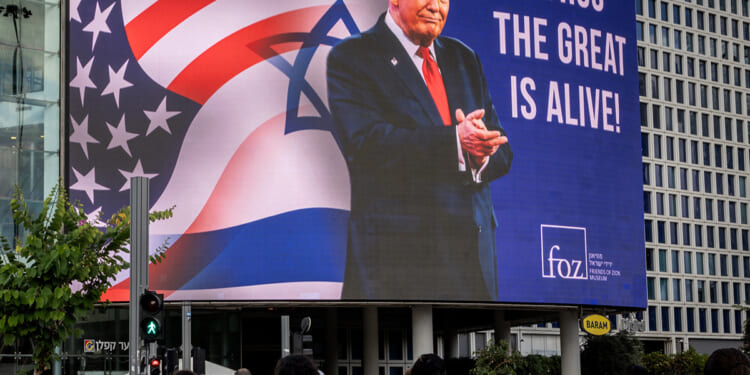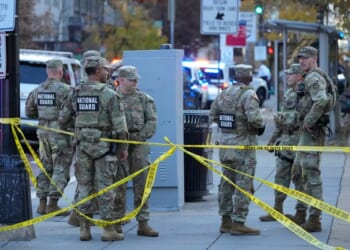
Most of the civilized world celebrated the release of 20 hostages whom Hamas had held since its barbaric attack on Israel on October 7, 2023. That assault killed more than 1,200 people — mostly civilians — and triggered a two-year war that claimed tens of thousands of lives and left the 25-mile-long Gaza Strip in ruins.
President Donald Trump flew to Israel as the hostages were being released and addressed the Knesset. He opened by declaring, “After so many years of unceasing war and endless danger, today the skies are calm, the guns are silent, the sirens are still, and the sun rises on a holy land that is finally at peace — a land and a region that will live, God willing, in peace for all eternity.”
He went on to proclaim, “This is not only the end of a war; this is the end of an age of terror and death, and the beginning of an age of faith and hope and of God … This is the historic dawn of a new Middle East.”
Much of the last two years has indeed been historic. The geopolitical landscape of the Middle East has shifted dramatically as Israel waged one of its most protracted and costly conflicts since its founding in 1948. Yet the causes of this war are anything but new.
Since its rebirth as a nation, Israel has been drawn into nearly 20 wars or military operations with neighboring Arab states or Palestinian factions. In recent decades, the conflicts have centered primarily on Gaza and in Judea and Samaria — known internationally as the West Bank.
- The First Intifada (1987-1993).
- The Second Intifada (2000-2005).
- Gaza War 2008-09.
- Gaza War 2012.
- Gaza War 2014.
- The 11-day War with Hamas (May 2021).
- The Present Gaza War.
Each of these conflicts ended with a ceasefire or peace agreement — brief seasons of calm that ultimately gave way to renewed hostility. History and Scripture alike remind us why these peace accords are fragile and provisional.
The Old Testament chronicles Israel’s earliest struggles for peace and sovereignty and foretells future conflicts involving the same region and people. A case in point: at this week’s 2025 Gaza Peace Summit in Egypt, Israeli Prime Minister Benjamin Netanyahu was disinvited after Turkish President Recep Tayyip Erdogan objected to his attendance — underscoring that even the most determined diplomacy cannot erase the deep and ancient roots of hatred toward Israel.
Still, the pursuit of peace remains both right and necessary. Scripture calls us to it. Psalm 122:6 instructs, “Pray for the peace of Jerusalem.” Our prayers and our policies should follow that call. Yet as we labor for peace, we must recognize that any peace forged by human hands will be temporary — imperfect and ever in need of vigilance and renewal.
True and lasting peace will come only when the Prince of Peace, Jesus Christ, reigns over all. Until then, Israel — and the world — must seek a managed peace, grounded not in illusion, but in faith, strength, and the assurance of God’s enduring plans and promises.
Originally published at The Washington Stand.
Tony Perkins is president of Family Research Council and executive editor of The Washington Stand.

















